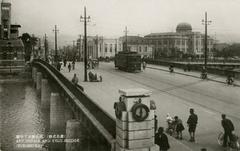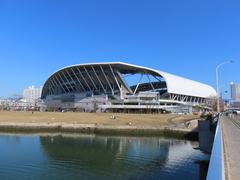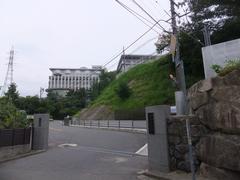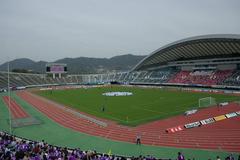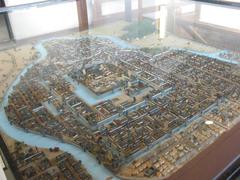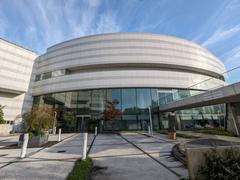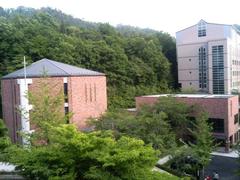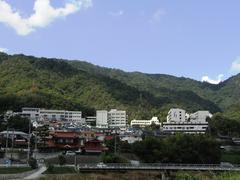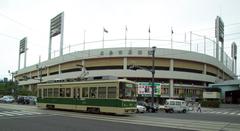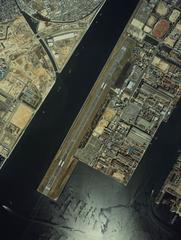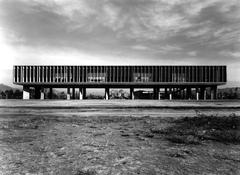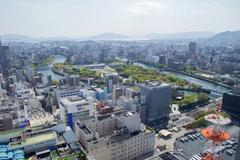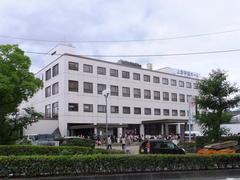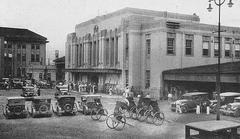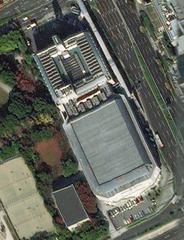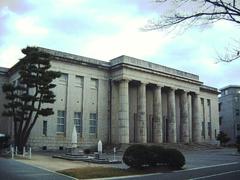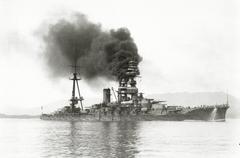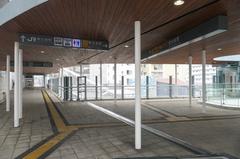Itsukaichi Station: Visiting Hours, Tickets, and Hiroshima Historical Sites Guide
Date: 15/06/2025
Introduction
Nestled in the Saeki Ward of Hiroshima City, Itsukaichi Station serves as a vital transportation hub, acting as the gateway to Hiroshima Prefecture’s historical, cultural, and natural attractions. With a heritage that stretches back to prehistoric settlements and a strategic location near the Ota River and Seto Inland Sea, Itsukaichi has been an important center for trade, culture, and transportation through the centuries (Hiroshima City Overview). Today, the station connects commuters and tourists alike to renowned sites including Miyajima Island, Hiroshima Peace Memorial Park, and Hiroshima Castle, while offering seamless travel options, accessibility features, and insights into local culture.
This comprehensive guide provides essential information on visiting hours, ticketing (including IC cards and passes), station layout, accessibility, nearby attractions, cultural events, and practical travel tips. Whether you’re on a day trip or a longer journey through Hiroshima, this guide will help you make the most of your visit (Mapcarta: Itsukaichi Station).
Table of Contents
- Introduction
- Historical Overview of Itsukaichi
- Modernization and Urban Integration
- Visiting Hours and Ticket Information
- Accessibility Features
- Transportation Connections
- Nearby Attractions
- Station Layout and Facilities
- Visitor Tips
- Frequently Asked Questions (FAQ)
- Conclusion and Resources
Historical Overview of Itsukaichi
Ancient and Medieval Roots
Archaeological evidence confirms that Itsukaichi’s roots extend to the Jomon period, with continuous settlement through the Yayoi era, when agriculture and trade flourished along the Ota River (Hiroshima City Overview). During the Middle Ages, the area became intertwined with the prosperity of the Itsukushima Shrine, as manor estates and waterways boosted commerce and spiritual activity.
Modernization: Meiji to Present
The Meiji Restoration (1868) heralded a new era of modernization for Hiroshima, transforming it into a military and industrial center (Explore Hiroshima History Timeline). Itsukaichi Station, established on the JR Sanyo Main Line, became a key part of the region’s expanded railway network. Electrification of the line in 1964 further improved connectivity and economic growth (Hiroshima City Overview).
Post-WWII, the area saw rapid reconstruction and urban integration. Itsukaichi-cho was incorporated into Hiroshima City in 1985, and infrastructure enhancements—such as the Astram Line—solidified the station’s role as a suburban and regional hub.
Visiting Hours and Ticket Information
- Station Hours: Open daily from 5:00 AM to midnight.
- Ticket Counters: Typically staffed from 6:00 AM to 10:00 PM.
- Ticket Machines: Automated machines are available 24/7 and support English.
- IC Cards: Suica, ICOCA, and PASMO can be purchased and recharged at the station for cashless travel across trains, buses, and trams.
- Special Tourist Passes: The Hiroshima Area Pass and JR West Rail Pass offer unlimited travel within certain zones—ideal for visitors covering multiple destinations.
- Ferry Tickets: For Miyajima, purchase ferry tickets at Miyajimaguchi terminal or online; ferries depart approximately every 15 minutes from early morning until late evening (Facts.net: Hiroshima’s Itsukushima Shrine).
Accessibility Features
Itsukaichi Station is committed to universal access. Facilities include:
- Elevators and ramps throughout the station
- Tactile paving for visually impaired travelers
- Accessible restrooms and barrier-free pathways
- Dedicated seating for those with disabilities
- Staff assistance available during operational hours
Transportation Connections
- JR Sanyo Main Line: Offers frequent, direct service to Hiroshima Station (approx. 10–15 minutes) and Miyajimaguchi Station (approx. 10 minutes).
- Hiroden Tram Network: Transfer at the adjacent Hiroden-itsukaichi Station for tram access to city attractions.
- Buses: Local and regional routes connect neighborhoods, shopping areas, and tourist sites.
- Ferry to Miyajima: Convenient access via train and ferry for the UNESCO World Heritage Site Itsukushima Shrine (Facts.net: Hiroshima’s Itsukushima Shrine).
Nearby Attractions
- Miyajima Island (Itsukushima): Famed for Itsukushima Shrine’s “floating” torii gate, scenic hiking trails, wild deer, and traditional townscapes. Seasonal events include the Water Fireworks Festival and Hina Meguri Doll Festival.
- Hiroshima Peace Memorial Park: Includes the Atomic Bomb Dome, Peace Memorial Museum, and annual peace ceremonies. Fully accessible and easy to reach by train and tram.
- Hiroshima Castle: Feudal-era castle with a museum, surrounded by cherry blossoms in spring.
- Sankeien Garden: Landscaped stroll garden with historic structures, seasonal blooms, and cultural events.
- Local Shopping Streets: Sample Hiroshima-style okonomiyaki, regional sweets, and shop for local crafts.
- Cycling and Outdoor Activities: Rent bikes near the station for routes along the Seto Inland Sea or toward local farms and valleys.
Station Layout and Facilities
- Platforms: One ground-level side platform (single direction) and one island platform (two directions), connected by an elevated concourse.
- Amenities:
- Waiting areas with climate control
- Clean, accessible restrooms
- Coin lockers for luggage storage
- Convenience stores and vending machines
- Tourist information counter with bilingual support
- Accessibility: Elevators, tactile paving, and barrier-free pathways throughout.
Visitor Tips
- Avoid rush hours (7:00–9:00 AM, 5:00–7:00 PM) for a more relaxed travel experience.
- IC cards are highly recommended for seamless transfers across trains, trams, and buses.
- Cash: Some small shops only accept cash; carry yen for purchases.
- Language: English signage is widespread, but a translation app is helpful for smaller establishments.
- Luggage: Coin lockers are available for secure storage during day trips.
- Etiquette: Queue at platform markings, keep noise low, and follow local customs at shrines and temples.
Frequently Asked Questions (FAQ)
Q: What are Itsukaichi Station’s opening hours?
A: Generally 5:00 AM to midnight, aligning with train schedules.
Q: How do I buy tickets?
A: Purchase at ticket machines, staffed counters, or use IC cards. Special passes are available for tourists.
Q: Is the station accessible for travelers with disabilities?
A: Yes, with elevators, ramps, tactile paving, and accessible restrooms.
Q: Can I transfer to Hiroshima’s tram network?
A: Yes, direct transfer to Hiroden-itsukaichi Station is available.
Q: Are there luggage storage options?
A: Coin-operated lockers are available near the station entrance and concourse.
Q: How do I get to Miyajima?
A: Take the JR Sanyo Line to Miyajimaguchi, then the ferry to Miyajima Island.
Conclusion and Resources
Itsukaichi Station is more than a transit point—it’s a well-connected gateway to Hiroshima’s historical sites, vibrant culture, and natural beauty. With modern facilities, universal accessibility, and proximity to UNESCO World Heritage Sites and local festivals, it’s ideal for both day-trippers and extended explorers. For the latest schedules, ticketing options, and travel tips, download the Audiala app and follow us on social media.
Start planning your Hiroshima adventure now and experience the region’s unique blend of tradition and innovation!
